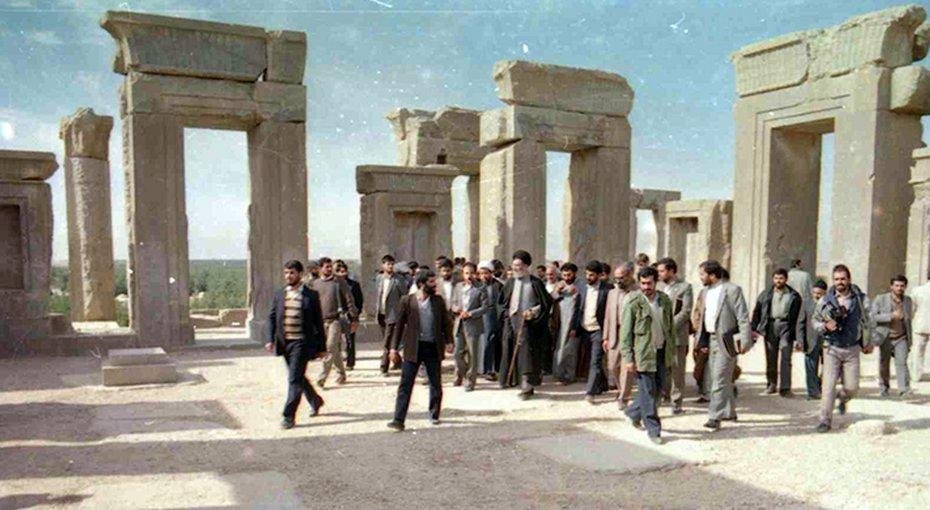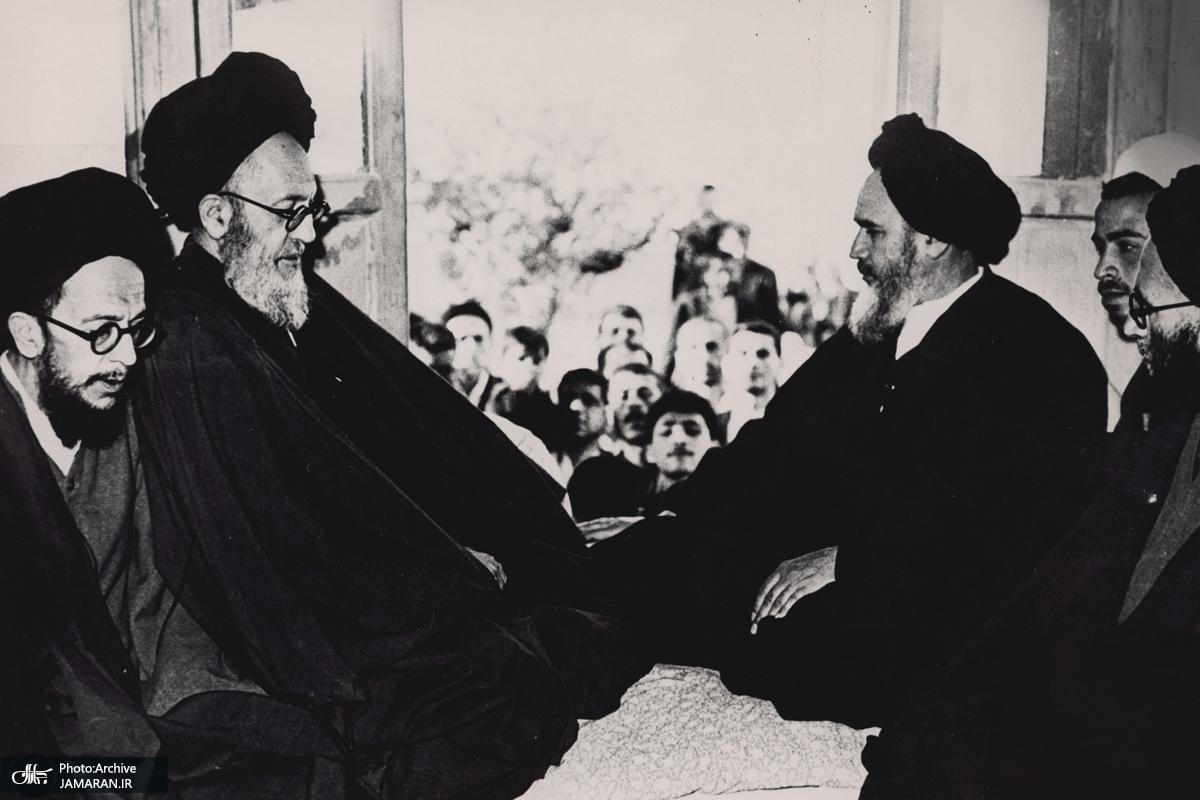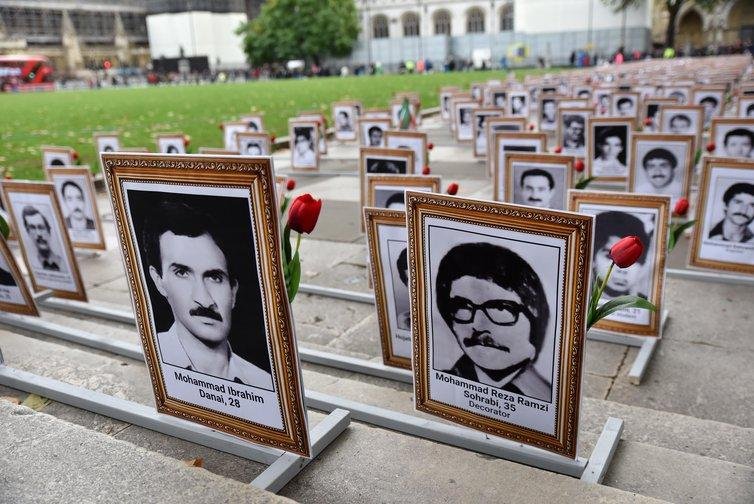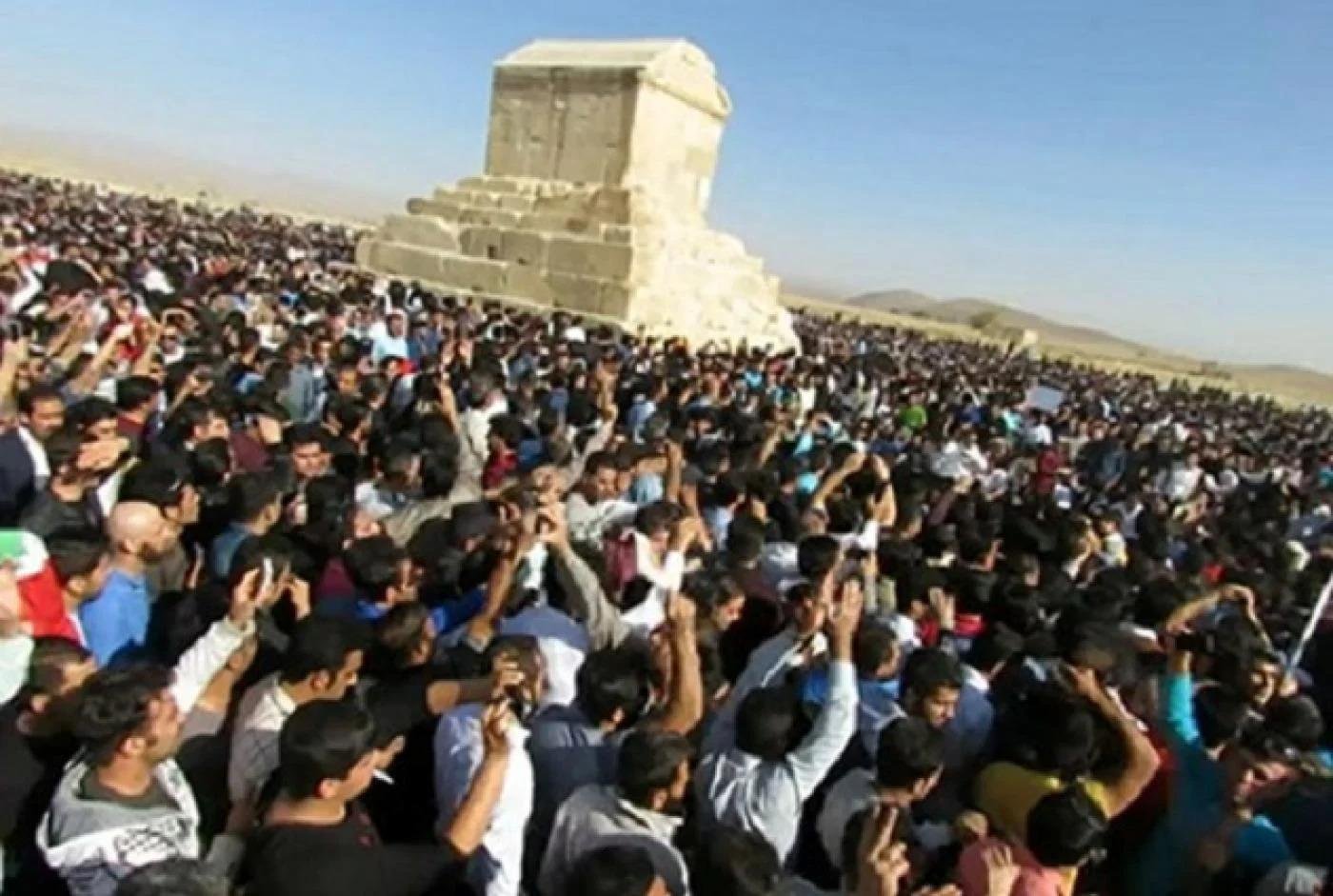"Religious bigotry" of Iranian clerics Persian nationalism and a blow to Islam
Over the past few months, Iran's baseless claims against Azerbaijan have been accompanied by an unprecedented level of open tension between the two countries. However, it is crystal clear that the statements of the Iranian clerical regime against Azerbaijan and the true essence of "Islamic bigotry" serve Persian chauvinism which has given a heavy blow to Islam in the last 40 years.
Persian imperialism in a new form
The existence of great conceptual similarities between the worldviews of the chauvinist mullah regime, which seized power in Iran in 1979, and the Pahlavi dynasty is one of the most obvious evidence of this.
The Pahlavi regime was eager to build an Iran-centred "Great Civilization." For this, a return to historical roots and Persian chauvinism was taken as an ideological basis. Iranian kings were actively promoting the Persian ideology in social and political life. In 1971, the Persian Empire's 2,500th-anniversary celebration at the initiative of Muhammad Reza Pahlavi in Persepolis was a declaration of this to the world. In his statements, the Shah declared that "Western societies are in a moral vacuum" and that a better society would be built in Iran.
In his 1977 book, "Toward the Great Civilization", Muhammad Reza Pahlavi predicted that upon reaching a population of 45 to 50 million, in approximately twelve years, Iran would reach the era of the “Great Civilization”.
Despite critical differences between the two political regimes that have dominated Iran for nearly a century, there are striking similarities between the Pahlavi monarchy (1925-1979) and the Islamic Republic (1979 - present). The "New Islamic Civilization" theory, which was formally put forward by Iran's Supreme Leader Ali Khamenei in 2000, is similar to the "Great Civilization" theory of the Pahlavis in many ways. Like Mohammad Reza Shah, Ayatollah Ali Khamenei has built a cult of personality around himself and has engaged in “civilizational thinking” — a preoccupation with defining the eternal essence and world-historical destiny of Iran through references to a glorious collective past.

The ideological basis of the new civilization proposed by Khamenei should be a "Persianized version" of Islam. Khamenei, like the Shahs of Iran, accuses the West of “moral degradation” and regularly declares that he wishes for an Iran with a population of at least 150 million people to achieve "Islamic goals".
As the "Great Civilization" emphasizes the decisive role of the Shah, the "New Islamic Civilization" must be realized under the leadership of the Vilayat-e Faqih (Guardianship of the Islamic Jurist) which, like the Shah, concentrates absolute power in his hands, which is not accepted as a concept by the vast majority of Shia ulama (the guardians, transmitters, and interpreters of religious knowledge in Islam) even today.
Nationalist mullahs at the service of Persian chauvinism
One of the clearest examples of the current regime's service to Persian nationalism is the policy of hatred and discrimination against other nationalities living in Iran, even more than during the Pahlavi period.
Even today, a number of ethnic groups in Iran are deprived of basic human rights, such as education in their own language and professional activities. However, without the support of Azerbaijanis, Arabs and other ethnic groups living in Iran, the revolution and the overthrow of the Pahlavi regime would not have been possible. From this point of view, what happened to an Azerbaijani ulama, Ayatollah Mohammad Kazem Shariatmadari showed whose interest the chauvinist mullahs served from the very beginning.

It is known that ethnic Azerbaijanis in northern and north-western Iran (mainly known as South Azerbaijan) played a decisive role in the events of 1979 under the leadership of Ayatollah Mohammad Kazim Shariatmadari. He was elected as the head of Qom religious school after the death of his successor Ayatollah Hoseyn Borujerdi in 1961, and was considered the highest among the Shiite ulama in Iran before the Islamic Revolution.
In 1963, it was Ayatollah Shariatmadari who initiated the granting of the rank of Marja' (“source to follow” or “religious reference”) to Ruhollah Khomeini due to the prohibition of the execution of Marja al-Taqlid (“authority to be followed”) by the Iranian legislation and saved him from execution. However, after the revolution, Shariatmadari was repressed at the behest of the clerics, put under house arrest and reportedly died of "kidney failure" in 1986.
Another prominent cleric, Ayatollah Sadegh Rouhani was put under house arrest in 1985 and kept there for 15 years because he protested the dictatorship of the "Vilayat-e Faqih". His brother was imprisoned in 1994 for protesting the absolute power of the clergy and died 3 years later. Ayatollah Mohammad Shirazi was also put under house arrest and died there in 2001, because he declared that Ali Khamenei's academic degree was not enough to be a religious leader.
In the summer of 1988, the Iranian regime summarily and extra-judicially executed tens of thousands of political prisoners held in jails across Iran. The massacre was carried out on the basis of a fatwa by the regime’s then-Supreme Leader Ruhollah Khomeini. Thousands of people raised their voices against the execution of innocent people who protested the concept of "Vilayat-e Faqih", and wrote a letter to Khomeini, openly declaring that "the regime's court has long surpassed the royal courts in oppression and tyranny."

The Iranian regime's repressions and persecutions against the Shiite clerics continue even today.
The reason was that Ayatollah Shariatmadari objected to the establishment of a dictatorship under the "Vilayat-e Faqih" concept put forward by Khomeini, and demanded the recognition of the rights of Azerbaijanis and other ethnic groups. Khomeini, avoiding the authority of the Azerbaijani religious scientist who was superior to him and his predecessor Ali Khamenei in terms of knowledge and science, did not allow his funeral to be held, and his body was taken to the Qom cemetery and buried secretly.
When Ali Khamenei was appointed as the Supreme Leader of the Islamic Revolution to replace Khomeini in 1989, he was not an "Ayatollah" but a "Hojjat ol-Eslam" and was recognized as a middle-level ulama. Calling himself imam and comparing himself to the family of the prophet, Khamenei showed himself in the very first test that the "Iranian imams" who wanted to create an image of innocent were not so different from the Persian chauvinists in their attitude towards their religious brothers.
The same repressions were carried out against Arabs, Kurds, and clerics from other ethnic groups. It could not have been otherwise, because Khomeini and the chauvinist mullahs around him had been at the service of Persian nationalism from the very first day.
Chauvinist clerics - realities of Iranian politics
Ideological views that have no basis in Islam, such as "Iran-centrism", "Persian chauvinism" and "chosen people", are always evident in the statements and actions of Iran's religio-political leaders. The chauvinist mullahs did this sometimes directly, and sometimes by "Islamizing" and glorifying Iran's pre-Islamic history of ignorance and paganism.
Iran's religious leader Ali Khamenei's statement that "chador [Islamic veiling] was used by Iranian aristocratic women before Islam, and in fact, it is a national symbol belonging to the Persians" is clear evidence of this.
The identification of Ayatollah Morteza Motahhari, Ayatollah Nasir Makarem Shirazi and other Iranian clerics with the Achaemenian emperor Cyrus II, who is considered to be a prophet by some scholars, also serves this nationalistic ideology.
It is not so difficult to understand the purpose of providing positive information about the Achaemenids and other empires in Iran's history textbooks from the time of President Mohammad Khatami (1997-2005), showing the image of an exemplary Iranian family against the background of the city of Pasargadae. In addition, it is no coincidence that in the last 20-25 years, the remains of Persepolis, which was the capital of the Iranian Empire, and the "heroics" of Cyrus II have been widely promoted in state-controlled media resources.

Under the presidency of Mahmoud Ahmadinejad (2005-2013), chauvinist mullahs and their proteges did not even hide their identities. Esfandiar Rahim Masha’i, who was Ahmadinejad's son-in-law and chief of staff, and who rose to the position of a vice-president, openly declared that "what Cyrus II said is the same as what the Prophet Muhammad said."
In 2010, by the order of Ahmadinejad, a monument belonging to Cyrus II was taken from the British Museum and displayed at an exhibition in Tehran.
For the last time, this monument was temporarily transferred from the British Museum to be displayed at a celebration held in Iran by the Shah in 1971 in connection with the 2500th anniversary of the Achaemenid Empire.
The "reformist" president, Hassan Rouhani (2013-2021), was not far behind his predecessors. After his 2015 trip to Persepolis, the historic capital of the Achaemenid Empire, it was Hassan Rouhani who said on Twitter that “Persepolis is a source of inspiration for Iranians. Hope we can achieve what this great nation & civilization deserves”.
#Persepolis is source of inspiration for Iranians. Hope we can achieve what this great nation & civilization deserves pic.twitter.com/zF7nvrTt0a
— Hassan Rouhani (@HassanRouhani) April 30, 2015
Finally, in October 2021, the allocation of $4.7 million by the incumbent President Ebrahim Raisi's (2021 - present) government, under various pretexts for the restoration of the tomb of Cyrus II located in Pasargadae, was a sign that the chauvinist mullahs are continuing the path of their predecessors.
In the last 43 years, the achievements of the chauvinist mullahs have not gone beyond serving Persian nationalism and oppressing the human rights of other nationals in the country. As Ayatollah Montazeri said in 2008, concerning the 29th anniversary of the revolution that "unfortunately, it is only by name that the revolution remains Islamic. Its content has changed, and what is taking place in the name of Islam gives a bad image of the religion".








